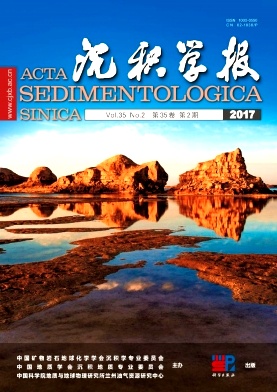Hydrocarbon Transmission System and Accumulation in Hala'alat Mountain Structural Belt in the Northern Margin of Junggar Basin
doi: 10.14027/j.cnki.cjxb.2017.02.017
- Received Date: 2015-08-05
- Rev Recd Date: 2016-05-01
- Publish Date: 2017-04-10
-
Key words:
- geological structure /
- transport pattern /
- geochemical tracing /
- basin margin slope zone /
- nappe-thrust zone /
- Hashan area
Abstract: The Hala'alat Mountain structural belt is controlled by the multi-period structural superposition during the long geohistory, which caused stratum repetition, absence or reversion, the geological structure is complicated, and the rule of hydrocarbon accumulation is not clear, which restricts the efficient hydrocarbon exploration. Through typical reservoirs and wells dissecting, the geological structure of anatomy and the combination of organic geochemical analysis, based on the geological chromatographic effect principle of molecular compounds in crude oil in the process of migration, the study is performed in the characteristics of hydrocarbon transport in different tectonic units. The style of hydrocarbon migration in different tectonic units is cleared, and four models of hydrocarbon migration and accumulation are established. The geochemical fingerprint parameter characteristics of source rocks are contrasted and analyzed in detail, the sedimentary water salinity, oxidative indicators are different in Mahu Depression and the Hala'alat Mountain structural belt of the source rocks of Fengcheng Formation. Hydrocarbon migration is studied through geochemical tracing based on biomarker compounds and nitrogen compounds of crude oil (oil sand). The results showed that the shallow slop zone and the middle-deep nappe-thrust zone had different source rocks, and belonged to different hydrocarbon transporting systems. Through the "fault-carpet" highly efficient transportation framework for hydrocarbon accumulation, the reservoir-formation characteristics of the slop zone which was mainly derived from the Fengcheng Formation source rocks in Mahu Depression generally showed distal lateral transportation and carpet-edge enrichment. The reservoir-formation characteristics of the nappe-thrust zone which was mainly derived from the Fengcheng Formation source rock in Hashan area generally showed proximal vertical and "multi-fault" transportation. Furthermore, the style of "multi-fault" model can be further subdivided into three types, which are fault micro-fracture net-shaped model in the western nappe superimposed region, the fault-sand ladder model in the middle thrust superimposed region, the fault dominant and sand body assisted model in the eastern faulted fold region. The results have important guidance for the exploration of hydrocarbon in Hala'alat Mountain structural belt.
| Citation: | WANG ShengZhu, WU QianQian, CHENG ShiWei, XUE Yan, CHEN Ping. Hydrocarbon Transmission System and Accumulation in Hala'alat Mountain Structural Belt in the Northern Margin of Junggar Basin[J]. Acta Sedimentologica Sinica, 2017, 35(2): 405-412. doi: 10.14027/j.cnki.cjxb.2017.02.017 |






 DownLoad:
DownLoad: